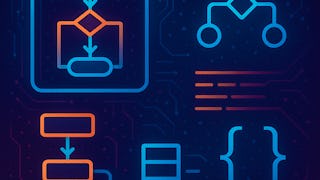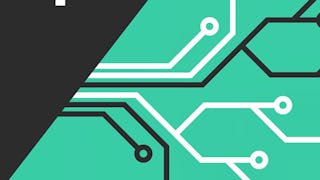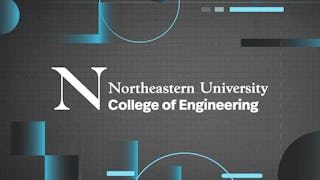This course explores data structures and algorithms for back-end development, focusing on performance and scalability. You'll learn to analyze, implement, and optimize key structures and algorithms in .NET Core to efficiently solve real-world back-end challenges.
您将获得的技能
要了解的详细信息
了解顶级公司的员工如何掌握热门技能

积累特定领域的专业知识
- 向行业专家学习新概念
- 获得对主题或工具的基础理解
- 通过实践项目培养工作相关技能
- 通过 Microsoft 获得可共享的职业证书

该课程共有5个模块
Understanding fundamental data structures is essential for efficient back-end development. This module introduces core data structures, including arrays, linked lists, stacks, and queues, explaining their characteristics and use cases. Learners will implement these structures in a .NET Core environment and analyze their time and space complexity using Big O notation. By comparing different linear data structures, participants will develop the ability to select the most suitable one for various back-end applications, such as optimizing API request handling.
涵盖的内容
22个视频13篇阅读材料8个作业3个非评分实验室3个插件
Efficient data processing requires mastering sorting and searching algorithms. This module covers widely used sorting techniques, such as bubble sort, quicksort, and merge sort, emphasizing their efficiency and real-world applications. Learners will implement these algorithms in .NET Core, analyze their time and space complexity, and explore searching techniques like linear search and binary search. By applying binary search within sorted data sets, participants will enhance back-end system performance and evaluate trade-offs between different algorithmic approaches.
涵盖的内容
18个视频11篇阅读材料9个作业3个非评分实验室3个插件
Hierarchical and interconnected data structures are essential for many back-end applications. This module introduces tree structures, including binary trees and balanced trees (e.g., AVL trees), along with traversal techniques such as preorder, inorder, and postorder traversal. Learners will also explore graph theory concepts, implementing traversal algorithms like Depth-First Search (DFS) and Breadth-First Search (BFS) to solve practical back-end challenges. Analyzing the time and space complexity of these structures will help developers optimize system performance.
涵盖的内容
14个视频11篇阅读材料9个作业3个非评分实验室3个插件
Advanced problem-solving techniques, such as dynamic programming and greedy algorithms, play a crucial role in optimizing back-end systems. This module covers the implementation of dynamic programming solutions (e.g., Fibonacci sequence, longest common subsequence) and explores how hashing and hash tables improve search operations. Learners will apply these advanced algorithms to real-world back-end tasks, such as database query processing and authentication systems, while evaluating trade-offs between different algorithmic approaches.
涵盖的内容
13个视频10篇阅读材料9个作业2个非评分实验室2个插件
AI-assisted development tools like Microsoft Copilot can streamline the implementation and optimization of complex algorithms. This module explores how Copilot enhances back-end efficiency by assisting in writing and optimizing data structures and algorithms in .NET Core. Learners will use Copilot to implement advanced algorithms like Dijkstra's shortest path and A* search, analyze AI-generated code for performance improvements, and complete a comprehensive optimization project. By leveraging Copilot, developers can refine their approach to algorithmic design and scalability.
涵盖的内容
10个视频4篇阅读材料4个作业1次同伴评审
获得职业证书
将此证书添加到您的 LinkedIn 个人资料、简历或履历中。在社交媒体和绩效考核中分享。
从 Algorithms 浏览更多内容
 状态:预览
状态:预览Birla Institute of Technology & Science, Pilani
 状态:免费试用
状态:免费试用 状态:免费试用
状态:免费试用 状态:预览
状态:预览Northeastern University
人们为什么选择 Coursera 来帮助自己实现职业发展




常见问题
To access the course materials, assignments and to earn a Certificate, you will need to purchase the Certificate experience when you enroll in a course. You can try a Free Trial instead, or apply for Financial Aid. The course may offer 'Full Course, No Certificate' instead. This option lets you see all course materials, submit required assessments, and get a final grade. This also means that you will not be able to purchase a Certificate experience.
When you enroll in the course, you get access to all of the courses in the Certificate, and you earn a certificate when you complete the work. Your electronic Certificate will be added to your Accomplishments page - from there, you can print your Certificate or add it to your LinkedIn profile.
更多问题
提供助学金,
¹ 本课程的部分作业采用 AI 评分。对于这些作业,将根据 Coursera 隐私声明使用您的数据。







